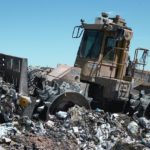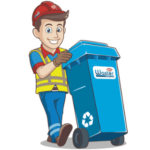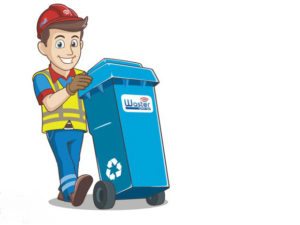Airport Waste Management: What Are The Types Of Waste Present? ✈️
Energy Disrupter
Airport Waste Management ✈️: Naturally, many would think that many types of waste are present in an airport. You are all correct; that is true.
Many retail activities reside in an airport, all of which generate different types of waste. But, aside from that, there also exist a waste of other types that do not belong to the tenants of the airport.
We will discuss all the types of waste documented you can find in an airport. Read on to learn more.
>Download Now: Free PDF Business Owners Guide To General Waste Bin Services
A bit about Waster
Before I discuss airport waste management, focusing on the types of waste, let me share with you more information about Waster.
We here at Waster provide you with innovative solutions for your and your business’s waste management and recycling needs. Furthermore, we provide flexible, 30-day contracts instead of the typical lock-in contracts, which proves to be better.
Click on the blue button to learn more.
READ: Fruit And Vegetable Waste Management 🥕🥝
The different types of airport waste
In order to implement proper waste management practices for both domestic and international airports, proper knowledge should be acquired, first. This is because, as mentioned above, there are many commercial activities going on around here alongside the main airport transactions (i.e., flight bookings, maintaining aeroplanes, accommodating travellers, etc.).
As many of you can guess, the implementation of said proper practices in an airport can be met with many challenges. But, when efficiently met and handled, it will benefit the airport economically, as well as environmentally.
Additionally, its success will also lead to affect airport authorities, customers, and the surroundings around the airport positively.
As such, one part that should be known to implement waste management practices is to correctly categorise waste.
Upon further research, there currently exists 8 different types of airport waste. In the following sections, we will discuss them each one by one.
8 different types of waste
The 8 different types of waste to remember in airport waste management are as follows: (1) municipal solid waste; (2) construction and demolition waste; (3) compostable waste; (4) deplaned waste; (5) international waste; (6) hazardous waste; (7) lavatory waste; and (8) spill cleanup and remediation waste.
Now, let us discuss them one by one.
1. Municipal solid waste
Abbreviated as MSW, they are one of the most common everyday items you can usually see in airports that are usually single-use. Examples of these items include throwaway plastic bottles and containers, packaging, paper items, cardboard, glass and aluminium bottles, and others. According to ICAO, airport municipal solid waste comes from four different, primary sources:
- Terminal waste
- Tenant waste
- Airline waste
- Cargo waste
Furthermore, they also have the most choice in airport waste management practices because of their prevalence in airports.
2. Construction and Demolition waste
Abbreviated as or C&D. Additionally, we can also call them Construction and Demolition Debris or CDD.
Airport waste management practices also consider this type of waste as common. Construction and Demolition waste are also common due to them coming from everyday airport processes such as land clearing.
Furthermore, C&D waste can also come from excavation, construction, and demolition. Examples of C&D waste include metal, wood and lumber, masonry materials, roofing, drywall, bricks, concrete, landscape, sand, rock, asphalt, stone, gravel, and others.
3. Compostable waste
Airports generate compostable waste in the form of not food not consumed yet. Additionally, green waste in the form of grass clippings, leaves, fruits and vegetables, shrubs, and trees are also generated through airport landscaping and maintenance activities.
In detail, some compostable waste can be considered as MSW. But, they are still treated different from MSW, nevertheless.
4. Deplaned waste
This type of waste originates from inside the aircraft itself, namely MSW inside the aeroplane. Examples of deplaned waste include MSW such as bottles, cans, newspapers, plastic cups food waste, soiled food paper, paper towels, and others.
Additionally, the volume of deplaned waste depends on the length of the flight.
5. International waste
To have proper airport waste management practices, waste generated from international flights must also be included in the plan. Obviously, international waste means waste from other countries, not originating from the airport’s location/country.
We can also consider this as quarantined waste (QW). Although it is often similar to MSW, it should be separated from MSW because not doing so runs the risk of contamination.
Additionally, airports decide on two things with international waste: (a) incinerate the waste on-site, or (b) make arrangements for it to be packaged and disposed of.
6. Hazardous waste
Handling hazardous waste is especially important for airport waste management for the safety of everyone. Hazardous waste examples include different products such as oil, chemical waste, solvents, and anything used for the repair and maintenance of aircraft.
This type of waste should be regularly monitored and stored carefully as to not let the leak. Failure to do so will result in endangering everyone around the premises. Additionally, the handling of hazardous waste is closely regulated by law.
7. Lavatory waste
This is a special type of waste generated during the emptying of the lavatory tanks of the aircraft. They are then pumped into a lavatory service vehicle for it to be safely disposed of.
The emptied lavatory tanks are then refilled and disinfected with water and disinfecting concentrate solution.
Lavatory waste itself contains different and dangerous chemicals and pathogens that can compromise the safety of the environment and human health. Read our blog on biomedical waste management for more information.
8. Spill cleanup and remediation waste
And, lastly, airport waste management practices should also consider the generate spill cleanup and remediation waste. These materials come into existence during the cleanup of spills and remediation of contaminated airports on-site such as storage, oil, and gas production, and vehicular leaks.
Airport waste management: conclusion
Part of what makes airport waste management successful is knowing how to classify each type of waste for proper storage, treatment, and disposal.
Watch this video and learn how the Munich airport handles its waste:
[embedded content]
[embedded content]
Waster: things you need to know
Is your business looking for waste bins? Check our waste recycling shop and find the best deals in terms of pricing and services.
Also, please call 1300 WASTER (1300 927 837), or email us at [email protected] if you have any further questions.

















